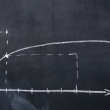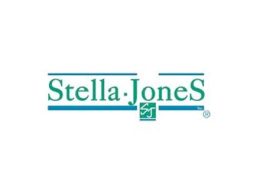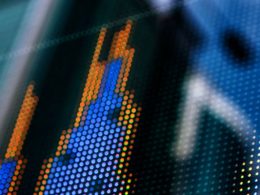by Jurrien Timmer, Director of Global Macro, Fidelity Management & Research Company
The second leg of my spring world tour is underway, with stops in Zurich (above), London, Paris, Frankfurt, Hamburg, and Amsterdam. A few weeks ago, I was in the other hemisphere, presenting to clients and colleagues in Vancouver and Salt Lake City. I have had some excellent conversations about the state of the world, with investment advisors in Vancouver and Zurich and corporate treasurers in London. I am now on the Eurostar to Paris and am curious to learn what’s on the minds of investors in Paris and Germany.
So far, the questions and concerns on the minds of investors have been the same, regardless of where they live. Of course, the questions start with the escalating tensions in the Middle East (on which I don’t have much wisdom to offer). After that it’s investment playbook in this most uncertain world. After a sharp but short-lived V-shaped correction in risk assets, investors are struggling to find a narrative or thesis for the coming months or even years. Is there really a change underway in the world order, in which globalization gives way to a de-dollarized mercantilism? Or was it just a brief test of policy vs markets, with the markets clearly winning?
If the latter, it could be business as usual from here, with earnings growth enabling the US market to grow into its lofty valuation, while EAFE and EM equities start producing better fundamentals. But if it’s the former, the US might lose some of its supremacy premium as the dollar becomes less hegemonic and international capital considers alternatives to US assets. If so, what percentage of an investor’s equity allocation should be in ex-US vs US equities? That was a question asked by everyone.
The other elephant in the room, of course is the fiscal dominance sweeping through the US and the rest of the developed world, and what that means for monetary policy, long rates, the dollar, and gold/bitcoin. While policy makers can easily pivot when tariffs become too harmful (as they did in April), the same cannot be said if the 10-year yield hits a 5-handle.
With the markets forcing a policy put in April, my sense is that the worst-case tariff scenario is off the table for now. I don’t think the US is going to stop being a global powerhouse anytime soon in terms of its economic dynamism, the depth and liquidity of its capital markets, or the leadership of its mega growers. But I do see the global playing field leveling out from here. The counterintuitive price action in the dollar tells us as much.
It’s a scenario in which incremental capital no longer automatically flows into US assets. It’s no longer a given. Non-US earnings are converging on US earnings (finally providing a catalyst for a valuation convergence), and US bonds and the dollar no longer appear to be the automatic safe havens that they once were. It’s a regime where TAMA (there are many alternatives) replaces TINA (there is no alternative), with ample opportunities for a diversified portfolio to generate alpha in a world where double-digit betas will be harder to generate.
Let’s explore.
V is for V-Shaped
The V-shaped recovery in April has brought the S&P 500 index back to within 2% of its all-time highs, while the MSCI EAFE index is making consistent new highs. As the chart shows below, there are only a few historical analogs left in which the market continues to make new highs so soon after drawing down 20%.

From V to M?
My sense is that the V turns to an M from here, with the current recovery rally giving way to a longer trading range, not unlike 2014-2016 (punctuated by the RMB devaluation in 2015 and an overly strong dollar in 2016), or 2018 (punctuated by the vol spike in January and the Powel Pivot in December).
The chart below shows that the correction this year held at the 2021 high, and so far the recovery has been bounded by the 2025 high. That seems like a reasonable range to me.

As always, I ask myself the question: do I want to be long or short the above chart? The trendline is rising and we are above it. That suggests that I don’t want to be short. But we are well above the trendline, which suggests I also don’t want to be too long either. Sideways seems likely for now.
Rising Wedge
The “sideways” call is supported by the daily chart below, which suggests a rising wedge for the S&P 500 index, amid a negative divergence between price and breadth. While we did get a breadth thrust in April, there has been no follow through since then. The market has narrowed again with only half of the stocks in the S&P 500 trading above their various moving averages.

Mag 7
The Mag 7, which led the downside in March and April, has led the upside in May but remains below its all-time high set in December. Given the degree of concentration of these companies, wherever the Mag 7 goes, so goes the index as a whole.

Sentiment
The various sentiment surveys which I track still indicate that the Wall of Worry continues to be climbed. Investor flows have disappeared and both the II and AAII surveys show little to no enthusiasm for equities.

We often look to sentiment indicators to gauge to which degree the selling has been exhausted. That signal was indeed produced back in April. On the other side of this ledger are corporate insiders. When retail is selling and insiders are buying, that is often a powerful signal. Indeed, the Vickers insider buying/selling ratio give us a modest buy signal in April.

Earnings & Valuation
Earnings estimates in the US have stabilized in recent weeks after being marked down 500 bps during the Tariff Tantrum. There is some room for improvement on that front if the trade situation does not deteriorate from here. Valuations, which expanded 29% year-over-year in 2024 and declined 3% yoy in April, are now flat. After two years of P/E driven gains, I don’t expect any further amplification here, which means that it will come down to earnings to do all the heavy lifting.

Earnings convergence
Meanwhile, earnings growth outside the US continues to converge. The playing field is leveling out, which should provide the long-awaited catalyst to drive a lasting mean reversion trade.

Global Liquidity
The MSCI ACWI is back at its all-time highs, buoyed by improving fundamentals and the rising tide of global liquidity. Ample liquidity tends to fuel asset price inflation, even if it comes at the expense of higher bond yields.

The Fed
Monetary policy continues to diverge, with the Fed on hold and both the ECB and SNB recently easing. Following this week’s FOMC meeting we have a new dot plot which is leaning slightly less dovish. The range of opinions among FOMC members remains quite broad (so take it with a grain of salt), but there is a clear consensus that several rate cuts are in order in the coming months. If the neutral rate is inflation plus 100 bps and the 2-year change in the core-PCE is 2.7%, then neutral would be 3.7%. That’s 3 rate cuts from here.

Note in the above chart that the money supply’s share of GDP has fully roundtripped from before the pandemic to now. In the past I have shown that nominal M2 is already back at the all-time high of $23T as an example of fiscal dominance overtaking monetary policy, but it’s the growth in money relative to the economy that’s the more important indicator. On that front, it doesn’t look like the Fed is behind the curve on either side of the policy spectrum.
The Dollar & Gold
With the Fed on hold and other countries easing, you would think that the dollar would be more bid than it has been. Interest rate differentials, after all, are a tried-and-true driver for currencies.

Instead, the USD is teetering near its cycle low. It tells me that the dollar is playing to the beat of a different drum these days.
The same thing happened to gold a few years ago when it stopped trading in reverse lockstep with real rates. Real rates, which used to explain all of gold’s price action, rose from -118 bps in 2021 to +208 bps today. Yet gold has more than doubled since then.

When both the dollar and gold - two of the world’s most important reserve assets – are no longer anchored by rate differentials or real rates, something is up. That something is a new multipolar world order in which central banks spread their reserves around to avoid being beholding to just one force. The result is a declining share of US dollars among reserve currencies and a rise in the value of gold.
Continuation Pattern
Could it be that Fiscal Dominance is replacing Monetary Dominance, and that a renewed bear steepening in the US yield curve might lead to another tail event? I think it’s a distinct possibility. The chart of the 10-year yield looks like a continuation pattern to me, centered around a 4% yield with the boundaries at 4% and 5%.

The term premium has been reverting to its pre monetary dominance baseline. More is likely to come on this front. Real yields have also been rising as inflation expectations (at least in the TIPS market) remains subdued. Real yields might be rising because economic prospects are improving, or they might be rising because investors demand more protection from fiscal shenanigans.

The difference is critical. If the former, then the stocks/bonds correlation could turn negative again, should those expectations prove too optimistic. But if the latter, rates could be rising regardless of economic growth, and like 2022 bonds could go from being a port in the storm to being the cause of the storm.
With the dollar and gold behaving differently from what their rate-anchored models would suggest, I am betting on the latter. I’m saying goodbye to the 60/40 and hello to the 60/20/20.
1188536.24.0
This information is provided for educational purposes only and is not a recommendation or an offer or solicitation to buy or sell any security or for any investment advisory service. The views expressed are as of the date indicated, based on the information available at that time, and may change based on market or other conditions. Opinions discussed are those of the individual contributor, are subject to change, and do not necessarily represent the views of Fidelity. Fidelity does not assume any duty to update any of the information.
Copyright © Fidelity Management & Research Company















